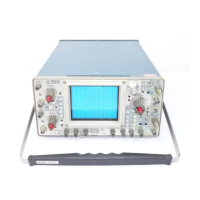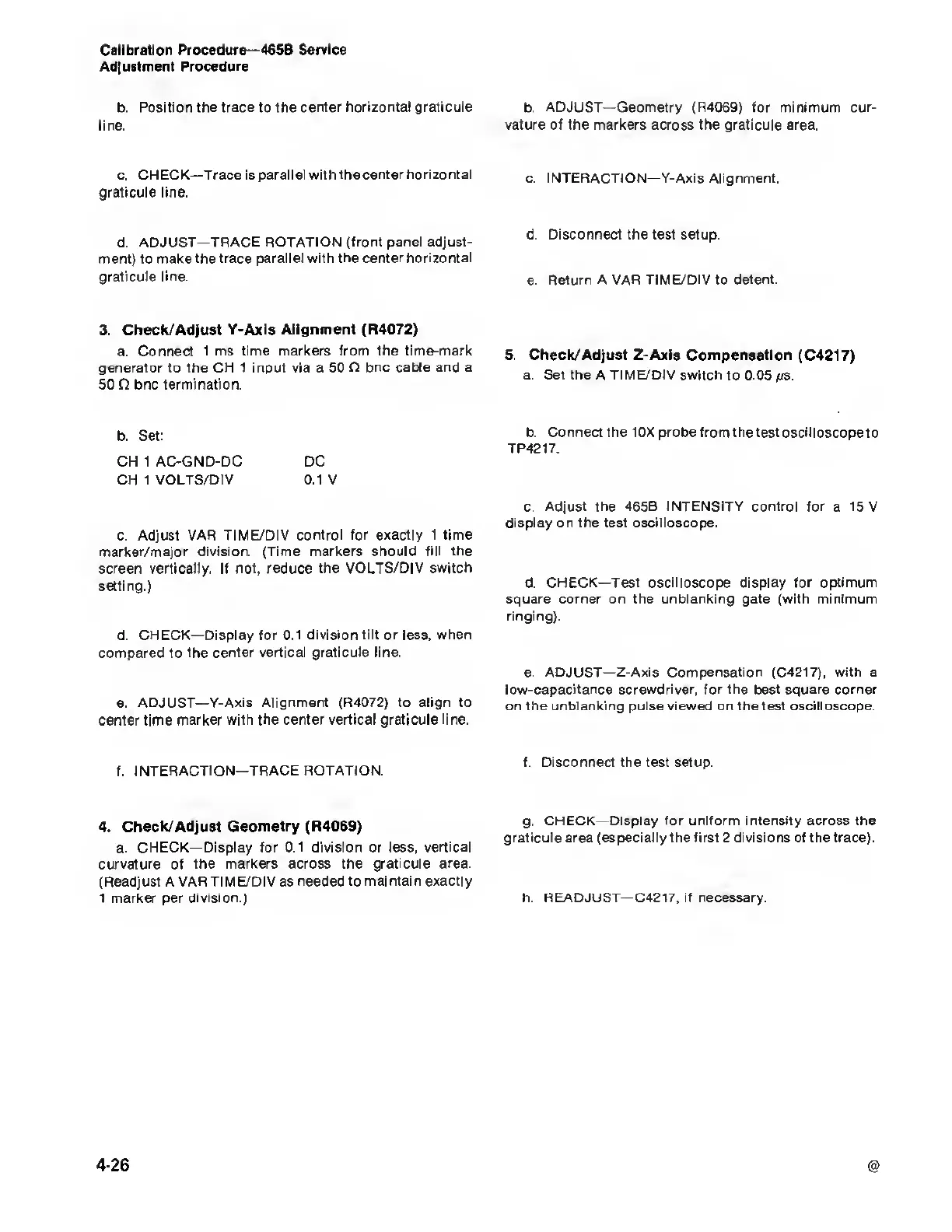Calibration Procedure—465B
Service
Adjustment Procedure
b.
Position the trace to the center
horizontal graticule
line.
c.
CHECK
—
Trace
is
parallel with the center horizontal
graticule line.
d.
ADJUST—TRACE
ROTATION (front panel adjust-
ment) to make the trace
parallel with the center horizontal
graticule
line.
3.
Check/Adjust Y-Axis Alignment
(R4072)
a. Connect 1 ms time
markers from the time-mark
generator to the
CH 1 input via a 50 Cl bnc cable and a
50
0 bnc termination.
b. Set:
CH
1 AC-GND-DC DC
CH 1
VOLTS/DI V 0.1 V
c. Adjust
VAR TIME/DIV control for exactly
1
time
marker/major
division. (Time markers should fill the
screen vertically. If not, reduce the VOLTS/DIV
switch
setting.)
d.
CHECK—Display for 0,1 division tilt or less,
when
compared to the
center vertical graticule line.
e. ADJUST—Y-Axis
Alignment
(R4072)
to align to
center time marker with
the center vertical graticule line.
f. INTERACTION—
TRACE ROTATION.
4. Check/Adjust Geometry
(R4069)
a.
CHECK—Display for 0.1 division or less,
vertical
curvature of the markers
across the graticule area.
(Readjust A VAR TIME/DIV as
needed
to
maintain exactly
1 marker per division.)
b. ADJUST—Geometry (R4069) for minimum cur-
vature
of
the markers across the
graticule
area.
c.
INTERACTION—
Y-Axis Alignment.
d.
Disconnect the
test setup.
e. Return
A VAR TIME/DIV to detent.
5.
Check/Adjust Z-Axis Compensation
(C4217)
a. Set
the
A
TIME/DIV
switch to 0.05
fjs.
b.
Connectthe 10X
probefromthetestoscilloscopeto
TP4217.
c.
Adjust
the
465B
INTENSITY
control for a 15 V
display on
the test oscilloscope.
d. CHECK—Test oscilloscope display for optimum
square corner
on the unblanking gate (with minimum
ringing).
e. ADJUST—Z-Axis Compensation (C4217), with a
low-capacitance screwdriver, for the best square corner
on the unblanking
pulse
viewed on the test oscilloscope.
f.
Disconnect the test setup.
g.
CHECK—Display for uniform intensity across the
graticule area
(especially the first
2
divisions
of
the trace).
h. READJUST—
C4217,
if necessary.
4-26

